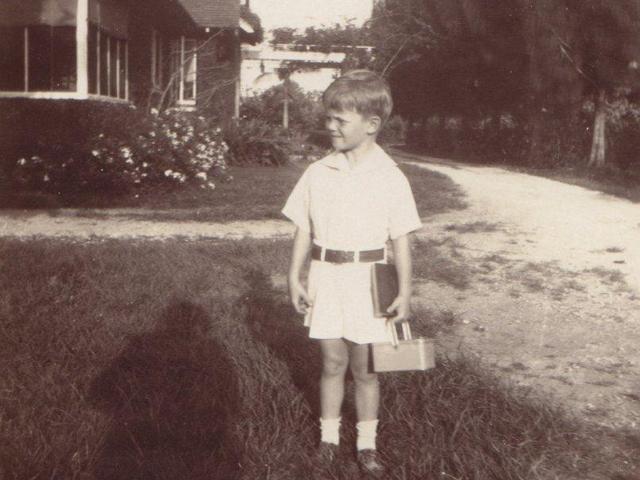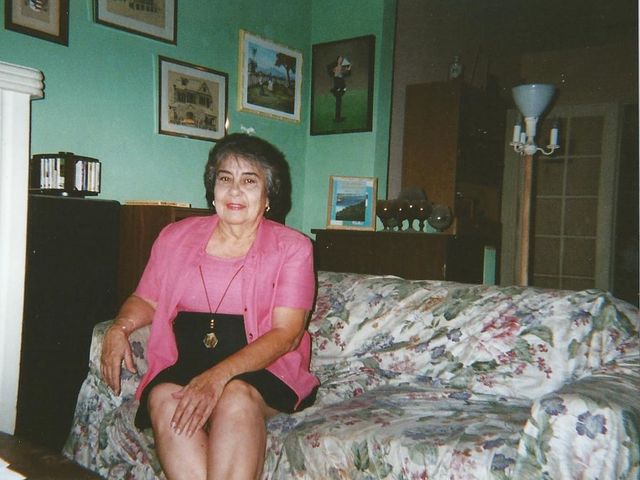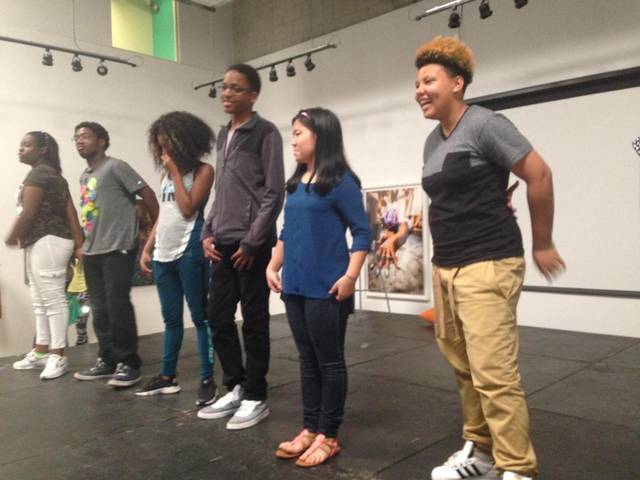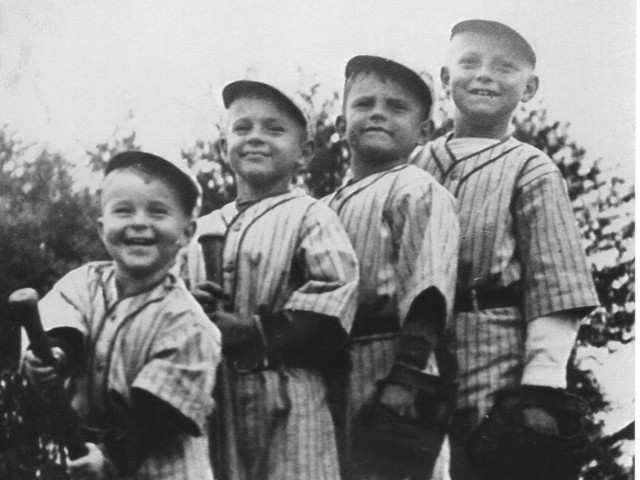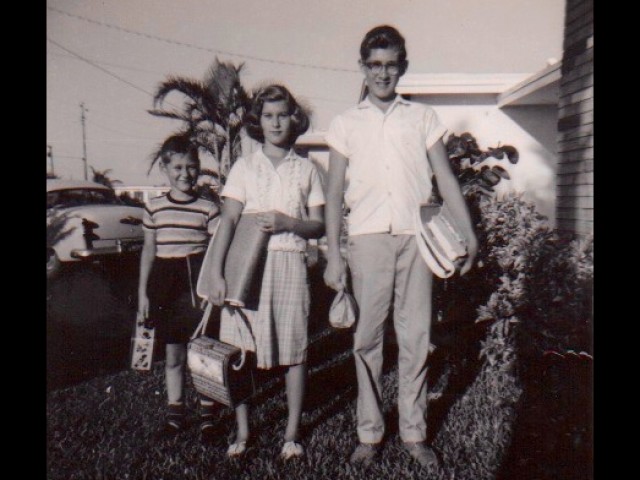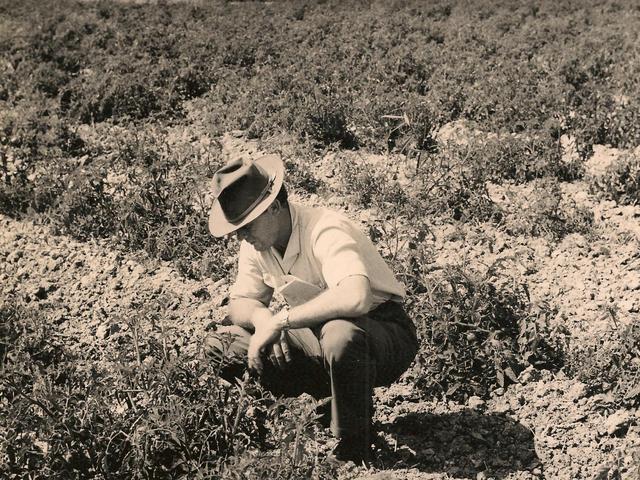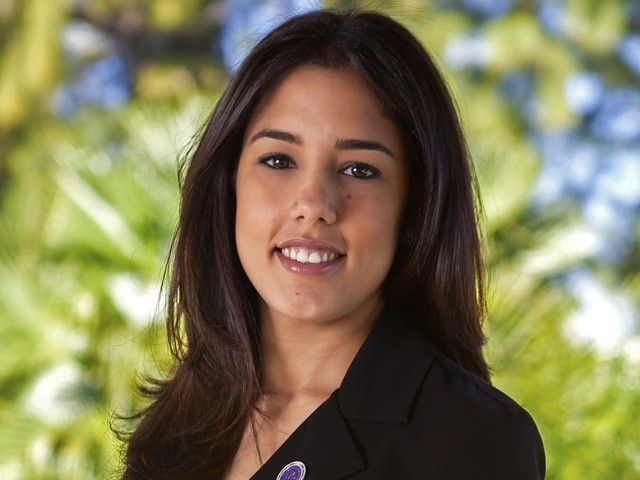I was born in Jackson Memorial Hospital where my mother recalls laboring while Seminole Indian women squatted to deliver their babies. In the late 1940s through the ’60s, we lived in the Shenandoah neighborhood in a modest home where the police often patrolled around on horseback. We shopped at Katz’s Kosher Meat Market as well as Food Fair on Coral Way. We also filled in groceries by selecting fresh produce from a truck that came around, the milkman who delivered to our door, or by walking to Willingham’s Grocery on Southwest 22 Avenue and 16th Street.
Miami was a quiet, clean, safe, small and segregated town. We had a party line at home or could make a phone call from a telephone booth for a dime. Children walked to school unattended. We rode the buses alone and my friends and I often went downtown by bus to shop, eat at Burdines’ Tea Room or go to the Olympia Theater. In elementary school, we took our salami sandwiches to the Tower, Trail, Tivoli, Miracle or Parkway theaters to attend movies for 25 cents. We spent a lot of time at Shenandoah Park where we had a library, swimming pool, tennis courts and a free kindergarten. I was a Brownie and Girl Scout in elementary school and we camped out at Camp Mahachee near Matheson Hammock.
My family often went to Policeman’s Park on Sunday afternoons where there were various rides. Sometimes, we drove across the Rickenbacker Causeway to Crandon Park. While crossing it, we always noticed Virginia Beach (the only beach where “colored “people could swim). We would grill or swim at Crandon Park and sometimes visit the zoo which was located there. Our schools were not air-conditioned and neither were most homes. We were so thrilled when my parents won a room air conditioner at an auction.
At Shenandoah Elementary, the principal, Miss Eloise Hatfield, read from the New Testament every morning over the PA. We were to recite psalms and sing Christmas carols even if we were Jewish. Girls had to wear dresses no matter what the weather. There was a green bench near a staircase in front of the principal’s office where children, usually boys, sat when they misbehaved. We were not allowed to chew gum, smoking was for the “hoods” and parents were involved in the PTA. I never had a “colored” classmate, teacher or neighbor. I did, however, march during the civil rights movement at the University of Florida in 1963-64. Also, when Dade County schools were integrated in 1970, I was sent to teach at all-black Frank C. Martin elementary.
My family attended synagogue at Beth Kodesh on Southwest 12th Avenue and 12th Street. On a few occasions, I remember the sounds of bombs that were thrown on the “shul.” We would go and see the broken chandeliers and windows and the fear in our parents’ eyes. My father emigrated from Poland in February 1939, six months before Hitler marched in and killed the rest of his family.
I went to Shenandoah Junior High where we had P.E. every day and girls had to take up home economics and the boys took shop. Students that misbehaved were paddled by “Mr. K.”
I will always remember the teachers crying during class after they learned on TV that the Russians had launched Sputnik. We had subsequent duck-and-cover drills where we had to get under our desks and cover our heads. Years later, during the Cuban missile crisis, we were terrified as we witnessed American troops marching down Flagler Street.
By high school, most of the Jews at Miami High (approximately 20 percent to 30 percent of the student body) stuck together. The service clubs at the school were predominately Christian, but we had our own clubs through the “Y” on Southwest 17th Avenue or the B’nai B’rith Organization. We hung out before and after school on the east outdoor patio known as “L.J.” (Little Jerusalem). We rarely dated outside our religion and although most of our parents were not college educated, most all of my friends finished college.
One of my painful recollections at Miami High was that the High Holy Days for Jews were unexcused absences. (They later made them teacher work days.) Sometimes, the rabbi at Beth David would write notes asking the teachers to not penalize us for observing our holidays. My friend Miriam and I were in the same Spanish class and were each given an F on a test that was administered on one of the holidays. We went to the department chair and pleaded our case and were permitted to take a make-up exam.
Overall, these were the best of times. Innocent in every way (no birth control yet), we had a blast at the Red Diamond Inn, Jahn’s Ice Cream Parlor and formal dances at famous hotels on Miami Beach. We saw Johnny Mathis, Steve Lawrence and Eydie Gorme among other star performers. We went to drive-in movies and often stuffed some friends in the trunk to avoid paying for entry for all of us. I met my husband, Steve, in 11th grade TV history class. He was a great athlete for Miami High and is in the Miami High Sports Hall of Fame. We had pep rallies before football games, which were held at the Orange Bowl. Unfortunately, it was later demolished. At Miami High, the school spirit in that architectural giant of an auditorium was unforgettable. We wore jinx dolls to spook the opposing teams and took pride in our school, which won a national championship. The Stingarees won big in sports and while there, we actually had the first Jewish homecoming queen. We were required in our senior year to take a course called Americanism vs. Communism, which reflected the fears that eventually took many of our classmates to Vietnam, some of whom never came back. However, being kids, our life was simple, people were respectful and we had no clue that almost one-third of our graduating class was made up of newly arrived Cubans.
I love this cosmopolitan city with its beautiful beaches and diverse culture. I also feel so grateful to have raised both of my wonderful sons here. Additionally, I have been blessed with teaching ESOL (English for Speakers of Other Languages) both in Dade County Schools and now at Miami Dade College for over 40 years. My students from all over the world and many different cultures have taught me so much. Miami has changed a lot, but my heart is still here in this balmy metropolis with ocean breezes and life-long friends and memories.

